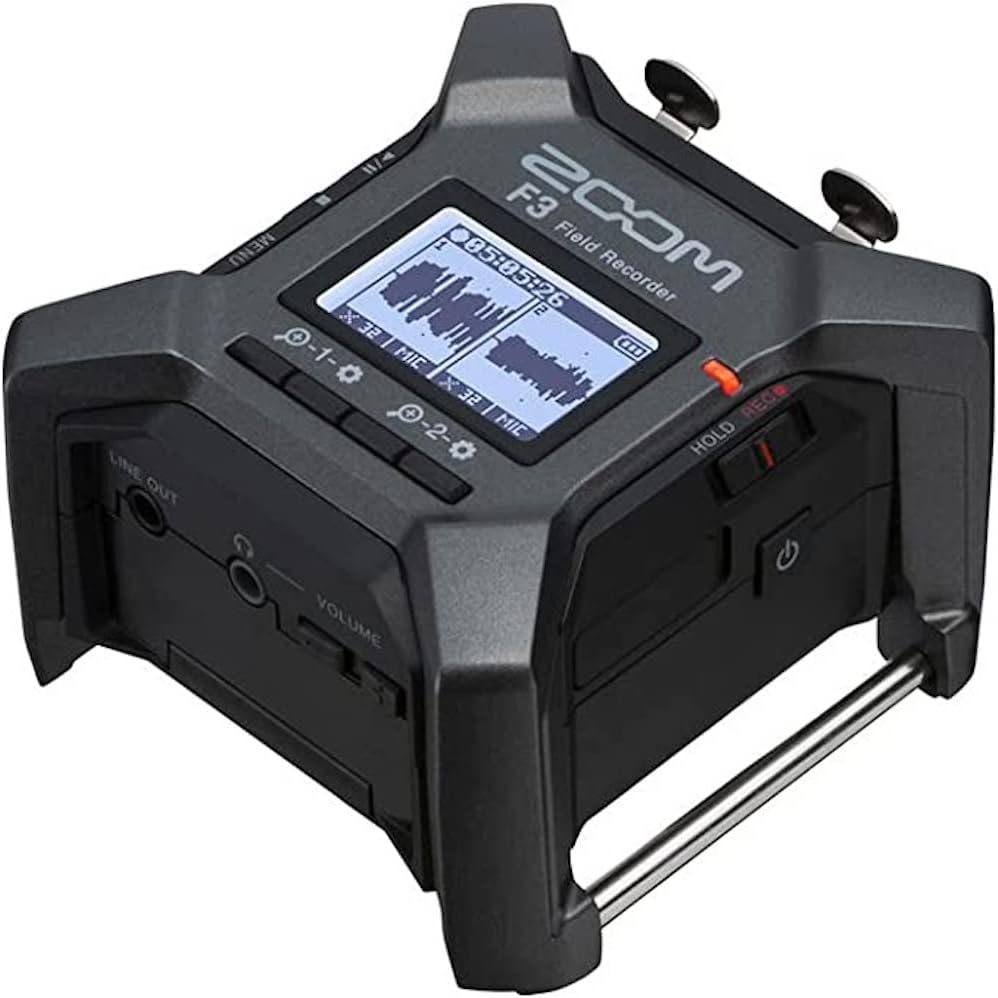
For those seeking an economical option for binaural microphones suitable for ASMR, the Roland CS-10EM should definitely be on your radar.
These earphones, equipped with microphones, offer both in-ear monitoring and binaural recording in a lightweight and compact format, priced at just under $100. This integrated design allows you to connect the earphones to a dummy head or wear them yourself while capturing ASMR sounds.
Additionally, the setup permits users to monitor their recordings in real-time. Detail-oriented individuals will appreciate the Roland CS-10EM’s feature that allows for immediate playback of recorded audio, making it easy to identify and correct any errors during the recording process.
Anyone interested in exploring binaural recording without a hefty investment should consider these impressive binaural microphones/earphones from Roland before exploring other options.
Continue reading to determine if the Roland CS-10EM is the right microphone for your needs.
Specifications
| Power Requirements | 2 V to 10 V |
| Frequency Response | 20 Hz-20 kHz |
| Capsule | 0.5” |
| Output | Stereo |
| Self-noise | Below 34 dB |
Sound Quality
Initially, we observed that the Roland microphones and earphones deliver impressive sound quality, with the added advantage of allowing you to monitor the audio while recording. Additionally, we found minimal interference during audio playback. Notably, the sound heard during playback closely matches the original recording.
These microphones perform exceptionally well when paired with high-quality recording devices. We suggest investing in a premium recorder to fully leverage the capabilities of these binaural microphones. Consider trying out Roland and Zoom recorders to determine which combination suits your needs best.
The Roland CS-10EM is certainly suitable for semi-professional productions, as it exhibits low distortion and minimal wind noise, making it effective for capturing subtle sounds like breathing and whispering ASMR triggers. However, it does lack some depth and amplitude, which is understandable given its budget-friendly price.
Most importantly, the binaural audio produced is highly convincing, requiring little post-editing to achieve the immersive sound typically generated by a pair of omni-directional microphones.
As you may know, binaural microphones are regarded as the premier choice for recording ASMR triggers, as they replicate the auditory experience of human hearing, facilitating the easier onset of tingles.
Noise Performance
ASMR artists may encounter significant challenges when utilizing the Roland CS-10EM due to its heightened sensitivity and subpar signal-to-noise ratio.
Users of the Roland CS-10EM for audio recording have observed that it is overly responsive to sound. While this characteristic can be advantageous for capturing ASMR triggers in a very quiet and controlled setting, it poses difficulties in environments with background noise.
The exact self-noise level of this microphone is not specified on the Roland website, where its official technical specifications are listed. However, considering its relatively unimpressive signal-to-noise ratio of approximately 60 dB, it can be inferred that its self-noise is likely not very favorable either.
To estimate a microphone’s self-noise, one can use its signal-to-noise ratio by subtracting it from 94 dB. With the Roland CS-10EM’s signal-to-noise ratio at 60 dB, we can deduce that its self-noise is around 34 dB, which is somewhat excessive for ASMR applications. While this method may not apply universally to all microphones and is not the most precise means of measuring self-noise, the findings align with user feedback regarding this particular Roland model.
Additionally, it is important to note that this microphone tends to capture the sound of the cable when recording audio with the earbuds in place. This issue can also be problematic when recording ASMR triggers using a dummy head.
Power & Build
The Roland CS-10EM resembles a standard pair of earphones, with microphones subtly integrated into the earbuds. The earphones feature a silver-plated finish that reflects light, contributing to a sleek overall appearance. Some users have noted that the design could easily be mistaken for higher-end earphone models.
The construction of the cables and connectors appears robust, avoiding any flimsy feel, while the earbuds themselves are designed for durability. The CS-10EM offers a comfortable fit due to their lightweight nature and the inclusion of rubber o-rings in each bud. This makes them suitable for extended ASMR recording sessions without causing discomfort or strain on the earlobes. Additionally, these o-rings assist in minimizing feedback during recordings.
One enhancement we would have appreciated is the inclusion of cable clips to prevent any unwanted noise from the cables while recording.
As mentioned earlier, a separate recorder is required to power these microphones, specifically one that can provide between 2 V and 10 V to effectively use the Roland CS-10EM.
Recording Setup
This microphone is designed for use on a dummy head or for direct insertion into the user’s ears. It features two connectors at the end that must be connected to the microphone and headphone ports of your selected recording device.
If you have not yet acquired a recorder, we suggest using these microphones with the Zoom H1n.
However, it is important to note that not all recorders are compatible with this binaural microphone. For instance, the Zoom H1 lacks a 3.5mm plug, which is necessary for connecting this microphone. Additionally, we advise against using it with Zoom H2 recorders, as they are known to experience issues with static and noise in the microphone jack.
Pros
- Compact and lightweight
- Multi-functional design, 2-in-1 earphone and microphones
- Binaural microphones
- Very affordable
The Roland CS-EM10 serves as an excellent microphone and earphone option for individuals interested in exploring binaural ASMR without the financial commitment of pricier microphones. This microphone-earphone combination delivers impressive sound quality, capable of closely replicating the desirable binaural audio typically achieved with a pair of omnidirectional microphones.



